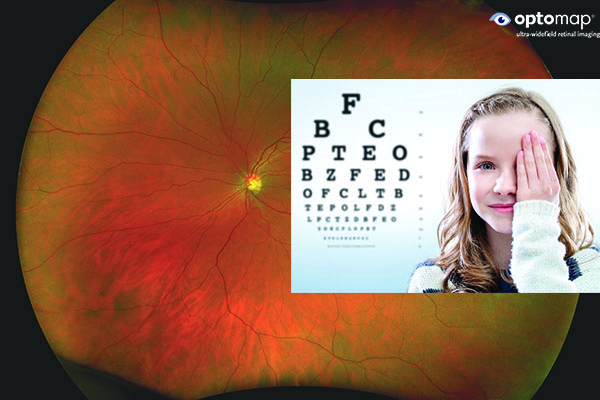The "new normal" will no doubt make this year’s back to school routine seem very different. Some parents and students prepare to go back to their school buildings, while others prepare to embrace a new hybrid learning program or virtual classrooms. For some states, the school year is beginning even earlier and while we are coping with many changes, some habits can remain the same, such as back to school eye exams. August is conveniently designated as Children’s Eye Health and Safety Month and can help remind us the importance of children’s eye health and comprehensive eye exams.

While we may notice subtle changes in appearance as our children grow and develop, there are many changes also occurring within the eye that are unseen. This marks the importance of annual eye exams that will assist in monitoring the development of your child’s vision as they grow. Routine vision screening or eye examination at an early age is very important to detect risk factors, such as lazy eye, crossed eyes, and color blindness that can potentially cause irreversible loss of vision or blindness. A majority of vision impairment issues go undetected since young children with impaired vision are often unaware of their vision issues—it is, after all, how they’ve always seen things. It is on us as parents and educators to look for signs of visual impairment.
Although schools generally do some basic testing of children’s vision, the norm is ever-changing and even if so, there is no doctor to perform a comprehensive exam or diagnose problems with your child’s eyesight. According to experts, nearly 90 percent of learning is visually, therefore without excellent vision, children are left at a disadvantage. Those with poor eyesight may struggle with school and learning, leaving them unable to reach their maximum potential. A yearly comprehensive eye exam can not only ensure your child’s vision is healthy or corrected, but also rule out diseases that can potentially lead to vision loss.
Many vision problems begin at an early age, so it’s important for children to receive proper eye care. In addition to changes in the front of the eye, the back of the eye (the retina) should also be examined in order to rule out signs of damage or disease. Conditions, such as retinal detachments and retinal holes can be treated successfully if diagnosed early.
It’s important to understand the importance of eye exams, and the utilization of the highest-level technology in pediatric screening. Optos ultra-widefield (UWF™) imaging technology is making great strides in diagnosing and treating eye problems in children and infants and offers little to no face-to-face interaction. Due to the cutting-edge modalities and ease-of-operation in performing optomap as part of the exam, signs of retinal disease can be found in the periphery, often before children and infants become symptomatic.
Talk to your eye care professional about including optomap as part of your child’s exam – Optos helps doctors to discover and document the retina with little or no face-to-face interaction for your child and takes only seconds to get a highly-detailed view of the retina, which is critical for early disease detection. The optomap image provides your doctor with an overview of approximately 200° or 82% of your child’s retina in a single capture, giving them a more detailed view than can be achieved by other means. We all know children can always be squirmy and may have difficulty sitting still for an eye exam, optomap exams are quick, easy and cause no discomfort on a child.